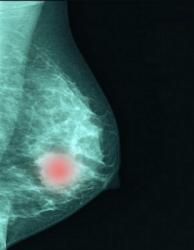Innovative technique for the radiation therapy of breast cancer
News published on 03/05/2021
Innovative technique for the radiation therapy of breast cancer: for a better saving of healthy tissue
The Bordet Institute's radiotherapy department, in cooperation with Ghent University Hospital (UZ Gent), is studying an innovative technique for the radiation therapy of breast cancer that aims to reduce the irradiation received by healthy tissue. The Institute is now proposing, for patients requiring radiation therapy for a cancer of the right breast, a new technique that involves placing the patient on their stomach. Due to the effects of gravity, this position naturally distances the treated breast from the rest of the body, thereby protecting healthy tissue during the treatment.
Principle and benefit of this new technique
For this new radiation therapy technique the patient is placed on their stomach on a special radiotherapy table designed to allow the breast to hang down from the table. This position has the benefit of distancing the zone targeted by the rays from the lungs and heart, thereby offering them better protection. The patient adopts a position similar to that of the crawl in swimming with the arm on the treated breast side placed alongside the body and the contralateral arm stretched out in front of the head. This position has the advantage of increasing the patient's comfort during treatment as there is no need to move the arm on the treated side.
Who is this new technique intended for?
At present this new technique is the subject of a clinical trial and is being made available to a limited group of patients being treated for breast cancer and requiring radiation therapy. The ultimate aim is to be able to propose this treatment to all patients in routine clinical practice. The move to the new Jules Bordet Institute on the Anderlecht university campus, in November 2021, will allow this technique to be generalised and made available to the greatest number of patients.
This research project is being financed by the Foundation Against Cancer
